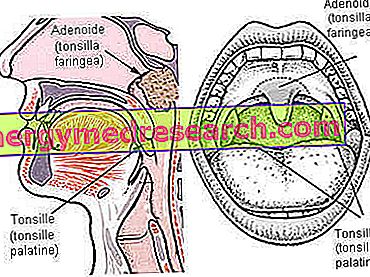What is Prostate Cancer?
Prostate cancer is characterized by the uncontrolled growth of abnormal cells in the prostate gland.

The onset of prostate cancer correlates to some risk factors, which can favor the neoplastic transformation of cells; first of all the age above 50 years. The extreme spread of prostate cancer after this age, and the excellent possibility of eradication in the early stages, underline the importance of an early diagnosis.
Diagnosis
Digital rectal exploration (DRE)
To learn more: Digital rectal exploration
Rectal exploration is the simplest diagnostic procedure to check the state of health of the prostate and to identify, to the touch, any alterations. With a gloved and lubricated finger, the doctor palpates the prostate and the surrounding tissues, through the wall of the rectum.
The exam allows to evaluate:
- Size, compactness and consistency of the prostate gland;
- Possible pain caused by contact or pressure on the prostate;
- Hard areas or nodules, which may suggest the presence of one or more tumors.
However, it must be emphasized that the tumor could cause alterations that are difficult to detect when palpated. For this reason, the determination of the blood level of prostate specific antigen (PSA) is a complementary test to digital rectal exploration.
PSA test (prostate specific antigen)
To learn more: Examination of the PSA
PSA is an enzyme produced by the prostate gland, whose function is to keep the sperm fluid after ejaculation. Normally present in low concentrations, it can be dosed at a blood level through a common blood test.
Diagnostic value
Neoplastic cells produce high amounts of prostate-specific antigen; therefore, determining PSA levels in the blood increases the chances of detecting the presence of the tumor, even in the early stages. After treatment, the PSA test is often used to check for signs of relapse.
Limitations of the PSA test
The test is not accurate enough to exclude or confirm the presence of the disease. PSA levels can be increased by various factors, even different from prostate cancer, including: benign prostatic hyperplasia, prostatitis, advanced age and ejaculation in the days before blood collection (within 48 hours of the test). A high PSA value, therefore, indicates a probable prostate anomaly, but by itself it cannot in any way be considered a safe index of prostate cancer.
Prostatic ultrasound
To learn more: Transrectal prostatic ultrasound

Prostate biopsy
To learn more: Biopsy of the prostate
If symptoms and test results give rise to suspicion of a tumor, a urologist may perform a prostate biopsy. This investigation is able to determine with certainty the presence of cancer cells in prostate tissue. The procedure, performed under local anesthesia, consists in taking small samples (at least 12), coming from different areas of the prostate gland. The ultrasound guide is inserted into the rectum and are taken, with a special needle, with transrectal or transperineal samples (region between the rectum and the scrotum). The pathologist analyzes the biopsy specimens under a microscope to search for possible neoplastic cells and establish the degree of the tumor.

If a biopsy is positive
A positive result confirms the presence of prostate cancer. A pathologist attributes a Gleason score to the neoplastic cells found in the biopsy sample, based on their microscopic appearance. The degree varies from 2 to 10 and describes how likely it is that the neoplasm metastasize. The lower the Gleason score, the less aggressive the tumor and the less likely it is to spread.
If a biopsy is negative
The presence of tumor cells cannot be excluded 100%. Therefore, the patient will enter a surveillance phase with further periodic checks.
Further investigations
If there is a significant chance that the cancer has spread from the prostate to other parts of the body, further diagnostic investigations may be recommended. When prostatic neoplasms metastasize, cancer cells are often found in nearby lymph nodes; if the cancer has already reached these locations, it could also have spread to the bones or other organs.
The investigations that allow defining how widespread the tumor is can include:
- Bone scintigraphy: uses low doses of a radioactive substance, injected intravenously, which accumulates in the bones damaged by the extension of the tumor. A scanner then reveals the amount of radioactive material accumulated in the metastatic sites found.
- Magnetic resonance imaging and computed tomography: allow you to acquire a series of detailed images of the lower part of the abdomen or other parts of the body, therefore they can identify the exact position of the cancer that has spread beyond the prostate.
Staging
Doctors analyze the results of rectal exploration, biopsy and imaging in order to define tumor staging. This relatively complex system reflects the many varieties of prostate cancer and makes it possible to determine which type of treatment is best suited.
Prostate cancer staging mainly depends on:
- Tumor ability to invade neighboring tissues, such as the bladder or rectum;
- Tumor ability to metastasize to lymph nodes or other parts of the body, such as bones;
- Grade (Gleason score);
- PSA level.
Doctors identify the stage of prostate cancer using the TNM system (tumor, lymph nodes and metastasis):
- "T" describes the characteristics of the tumor;
- "N" indicates if the tumor has spread to the regional lymph nodes (they are located next to the prostate in the pelvic region).
- "M" refers to the spread of the tumor to other parts of the body (metastasis).
All these parameters (TNM, Gleason and PSA) make it possible to attribute three different risk classes to the disease: low, intermediate and high risk.
Sometimes, a simpler staging system is used.
The stages of prostate cancer are:
- Phase I - early stage tumor, very small and completely inside the prostate gland; may not be detected during a digital rectal exam.
- Phase II - the neoplastic mass is larger, but remains confined within the prostate.
- Phase III - the tumor extends beyond the prostate, may have invaded the seminal vesicles or other neighboring tissues, but the neoplastic cells have not yet metastasized to the lymph nodes.
- Stage IV - advanced cancer, spread to the lymph nodes or other parts of the body, including bladder, rectum, bones, lungs or other organs (about 20-30% of cases are diagnosed at this stage).
If prostate cancer is diagnosed at an early stage, the chances of survival are generally good. About 90% of patients in stages I and II will live at least another five years and 65-90% will live for at least another 10 years. Phase III correlates to 70-80% chance of living for at least another five years. However, if prostate cancer is diagnosed when it has reached stage IV, the patient has a 30% chance of living for at least another five years.
Treatment
To learn more: Drugs for the treatment of Prostate Cancer
Treatment for prostate cancer depends on individual circumstances, in particular: from the tumor stage (from I to IV), the Gleason score, the PSA level, the symptoms, the patient's age and his general health conditions. For many cases of prostate cancer, treatment may not be immediately necessary.
The purpose of therapy is to treat or control the tumor, so as not to reduce the patient's life expectancy.
Active surveillance
If prostate cancer is at a very early stage, it grows very slowly and causes no symptoms, the patient may decide to delay treatment. Active surveillance includes an observation period, which aims to avoid unnecessary treatment of harmless tumors (and related complications), while providing timely intervention for men who need it. Active surveillance involves regular follow-up tests to monitor the progression of prostate cancer: blood tests, rectal examinations and biopsies. When the evidence shows that the disease is progressing, you can opt for a treatment, such as surgery or radiation therapy.
Radical prostatectomy
To learn more: Radical prostatectomy intervention
Radical prostatectomy involves the surgical removal of the prostate gland, some surrounding tissues and some lymph nodes (this is why the correct name of the procedure is radical prostatectomy and bilateral pelvic lymph node dissection ). This treatment is an option for treating localized prostate cancer and locally advanced carcinoma.
The radical prostatectomy procedure can be performed by:
- Laparoscopic robotic surgery: the instruments are connected to a mechanical device (robot) and inserted into the abdomen through small incisions. The surgeon sits at a console and uses the manual controls to guide the robot, which allows more precise movements with surgical instruments.
- Retropubic surgery : the prostate is removed through an incision in the lower part of the abdomen. Compared to other types of surgery, it correlates to a lower risk of nerve damage, which could lead to problems with bladder control and erectile dysfunction.
- Perineal surgery : to access the prostate, an incision is made between the anus and the scrotum. The perineal approach to surgery can allow for faster recovery times, but it is more difficult to avoid nerve damage.
- Laparoscopic prostatectomy: the doctor performs surgery through small incisions in the abdomen, with the assistance of a laparoscope.
Radical prostatectomy, like any operation, involves certain risks and side effects, including urinary incontinence and erectile dysfunction. In extremely rare cases, post-operative problems can cause the patient's death.
Having completely removed the prostate and seminal vesicles, the patient will become sterile and will have an orgasm without ejaculations, but - in the absence of complications - he will be able to resume an almost normal sexual life. The reduction or absence of an erection are common side effects of the intervention, for which however appropriate pharmacological solutions exist.
In many cases, radical prostatectomy allows the elimination of neoplastic cells. However, prostate cancer can recur after the operation.
Radiotherapy
Radiation therapy involves the use of radiation to kill neoplastic cells. The radiation source can be external or be inserted directly into the patient's appropriately anesthetized prostate. In the latter case we speak of brachytherapy, an intervention indicated above all in patients in low or intermediate risk class.
Radiation therapy is an option for treating localized prostate cancer and locally advanced prostate cancer. Radiation therapy can also be used to slow the progression of metastatic prostate cancer and alleviate symptoms.
Radiotherapy is normally administered on an outpatient basis, during short sessions five days a week, for 1-2 months. The side effects of radiotherapy can include fatigue, painful and frequent urination, urinary incontinence, erectile dysfunction, diarrhea and pain during defecation. As with radical prostatectomy, there is the possibility that the tumor may recur.
Brachytherapy
Brachytherapy is a form of "internal" radiotherapy, in which a number of small sources of radiation are surgically implanted in prostate tissue. This method has the advantage of providing a dose of radiation directly to the tumor, reducing damage to other tissues. However, the risk of sexual dysfunction and urinary problems is the same as radiotherapy, although intestinal complications are minor.
Hormone therapy
Hormone therapy is often used in combination with radiotherapy, to increase the chances of treatment success or to reduce the risk of recurrence. Furthermore, it can be used in men with advanced prostate cancer to alleviate symptoms, reduce tumor mass and slow down the proliferation of neoplastic cells.
Hormones control the growth of prostate cells. In particular, the tumor needs testosterone to grow. Hormone therapy can:
- Stop testosterone production with luteinizing hormone-releasing hormone (LH-RH) agonists;
- Block the effects of testosterone, preventing the hormone from reaching the cancer cells, using antiandrogenic drugs (eg Cyproterone ).
Limiting the availability of hormones can lead to the death of cancer cells or their slower proliferation. The main side effects of hormone therapy are caused by their effects on testosterone and include reduced sex drive and erectile dysfunction. Other possible side effects include: hot flushes, sweating, weight gain and breast swelling.
orchiectomy
To learn more: Orchiectomy intervention
Alternatively, it is possible to opt for surgical removal of the testicles ( orchiectomy ).
The effectiveness of orchiectomy in reducing testosterone levels is similar to that achieved by the pharmacological approach, but the intervention can lower testosterone levels more rapidly.
High intensity focused cryotherapy and ultrasound (HIFU)
Cryotherapy (or cryoablation) involves the freezing of prostatic tissues to kill cancer cells: it involves the insertion of tiny probes into the prostate through the wall of the rectum, therefore freezing and thawing cycles allow to kill cancer cells and some surrounding healthy tissues . Similarly, the HIFU provides for the use of high intensity ultrasound focused to heat precise points in the prostate.
These procedures are used on some occasions, especially to treat patients with localized prostate cancer. However, HIFU treatment and cryotherapy are still being evaluated and their long-term efficacy has not yet been proven.
Chemotherapy
Chemotherapy is mainly used to treat metastatic cancer and tumors that do not respond to hormonal therapy. The treatment destroys the cancer cells, interfering with the way they multiply. The main side effects of chemotherapy are caused by their effects on healthy cells and include: infections, fatigue, hair loss, sore throat, loss of appetite, nausea and vomiting. Sometimes, if prostate cancer is already widespread, the aim is not to cure, but to control and reduce symptoms (such as pain), in addition to prolonging the patient's life expectancy.



